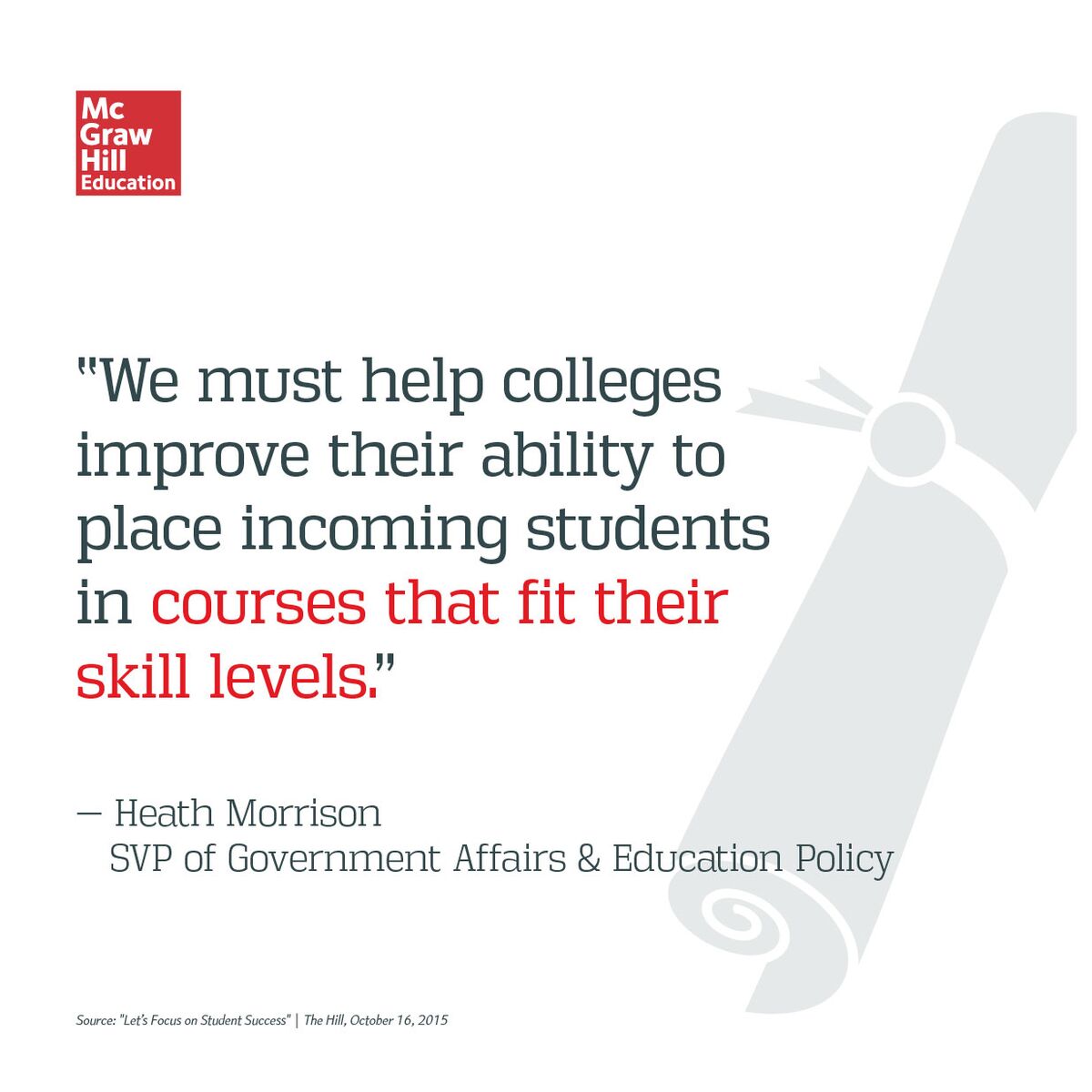Log In to My PreK-12 Platform
Let’s Focus on Student Success
Many colleges and universities have committed to improving placement and support practices, but political leaders can do much to expand these initiatives.

This article was originally published on October 16, 2015 for The Hill. The complete article can be accessed here.
As we begin the next presidential election cycle, we are already hearing endless promises and declarations of ways life could—and should—be better. One such way is to lower the cost of college, with the goal of helping the 60 percent of Americans without a college degreeto earn one, and lessening the $1.2 trillion in debt shouldered by students and their families.
Policymakers have developed a few creative responses to this challenge. President Obama’s Free Community College proposal aims to make two-year degrees “as free and universal in America as high school.” In August, Hilary Clinton unveiled a plan that calls for the federal government to help undergraduates pay tuition at public colleges without needing loans. Sen. Marco Rubio (R-Fla.) has proposed connecting repayment of higher education financing to income through equity funding.

Increasing access to higher education seems like a logical path toward creating a nation of college-degree holders employed in high-demand fields. But if our goal is to increase the number of college graduates and lower the amount of debt, is it the best place to start?
The cost of college is certainly a barrier for many, and is a worthy challenge to solve. But there is a more fundamental, if overlooked, issue that must be addressed first: far too many students who enroll in higher education don’t graduate. Less than 60 percent of students at four-year colleges or universities graduate within six years; at two-year colleges, less than 30 percent of students graduate after three years. Why? They are not ready for the rigor of college-level work.
This is the face of the college affordability issue: Students arrive in college aspiring to progress but are not prepared for its academic challenges. These students are often placed in courses beyond their skill levels and ultimately find themselves in remediation, where they pay college-level prices for courses that don’t count toward their degree. Very few of these students ever return to doing college-level work: more than 50 percent of students in community colleges enter remediation, and nearly 40 percent of those students never complete their remedial courses, let alone earn a degree.
Through our community college system, we have already made great strides in making higher education accessible to more students. Before implementing a plan to provide even greater access, we should make the investments necessary to significantly improving outcomes for currently enrolled students. That means helping students who are already enrolled graduate on time find ready-to-start careers that will allow them to pay down their debt. Doing so will also help colleges increase continuing enrollment.
To accomplish this, we must help colleges improve their ability to place incoming students in courses that fit their skill levels. By giving colleges the tools to assess which students are ready for credit-bearing courses and which need help, colleges will be able to avoid putting students in situations where they are likely to struggle and face an increased risk of dropping out. Once students are placed in the right course, technology can help instructors support them by providing a learning experience tailored to their unique strengths and weaknesses, ensuring that students get the best results possible—and saving time and money.
Many colleges and universities have committed to improving placement and support practices, but political leaders can do much to expand these initiatives. Knowing that many of the students enrolling in college today will need help if they are to be successful, our political leaders should encourage and support the use of research-based programs and tools with demonstrated results as part of colleges’ student success plans.
It is easy to get discouraged by the political process. Too often important issues are ignored, or the solutions offered are neither practical nor realistic. College affordability is a timely and relevant issue that demands the attention of those vying for political office. The questions that remain: Will affordability be defined appropriately? And will realistic solutions be sought? If political leaders dedicate themselves to what is possible, more young people will be ready for success in college. That is a goal our entire country can afford.